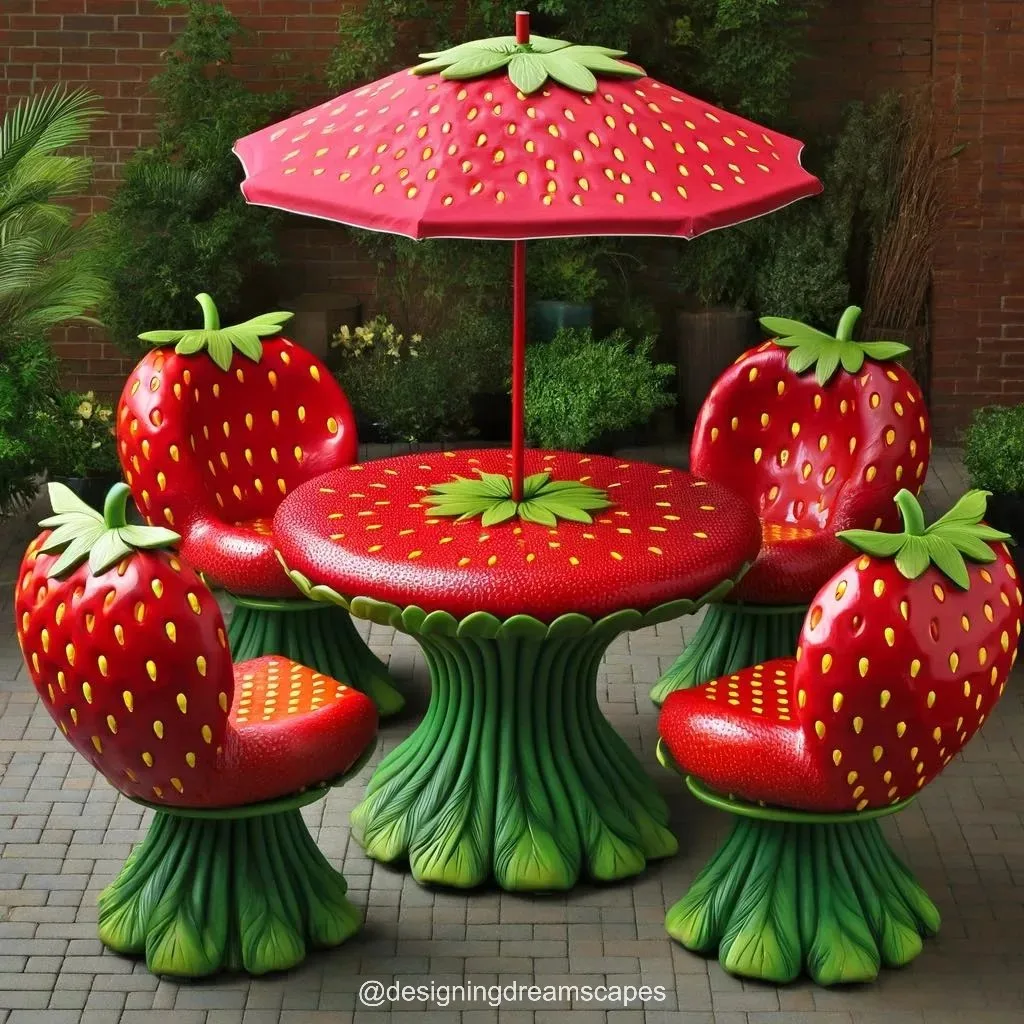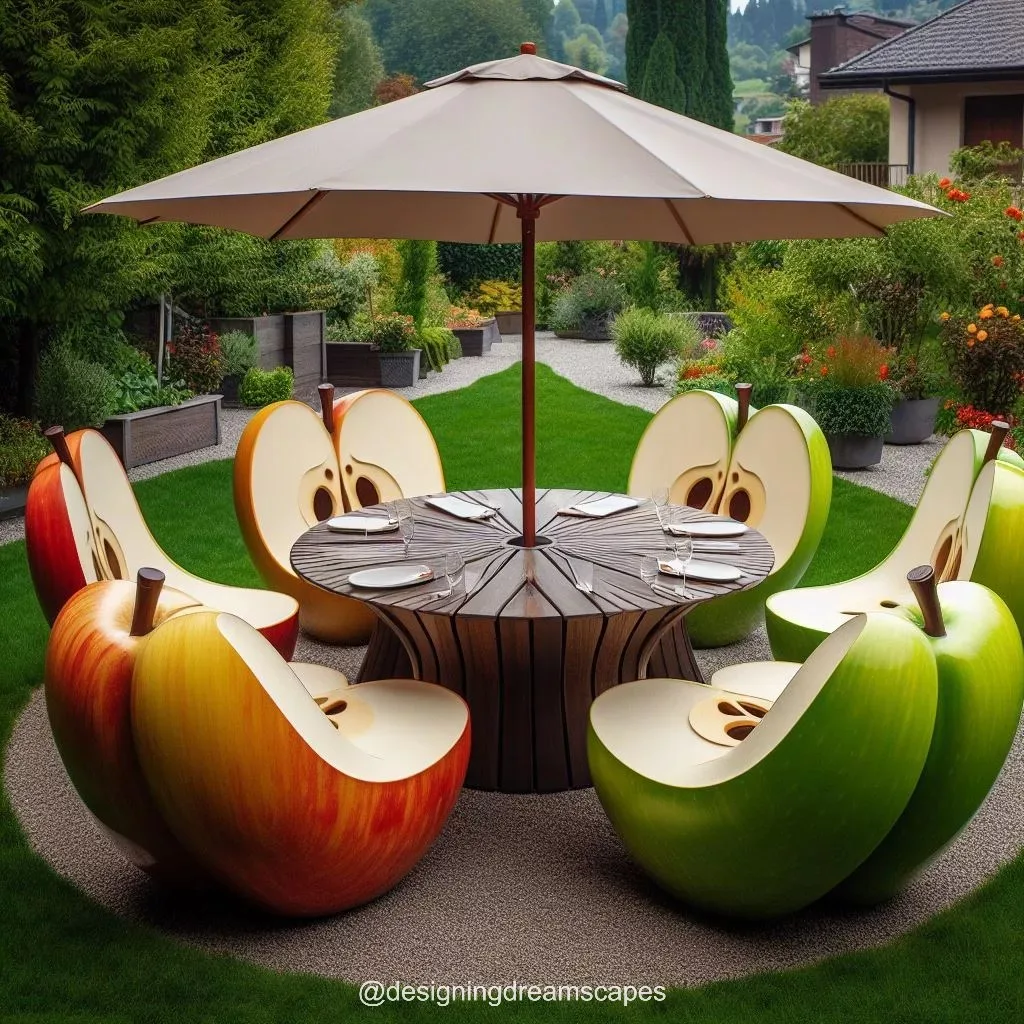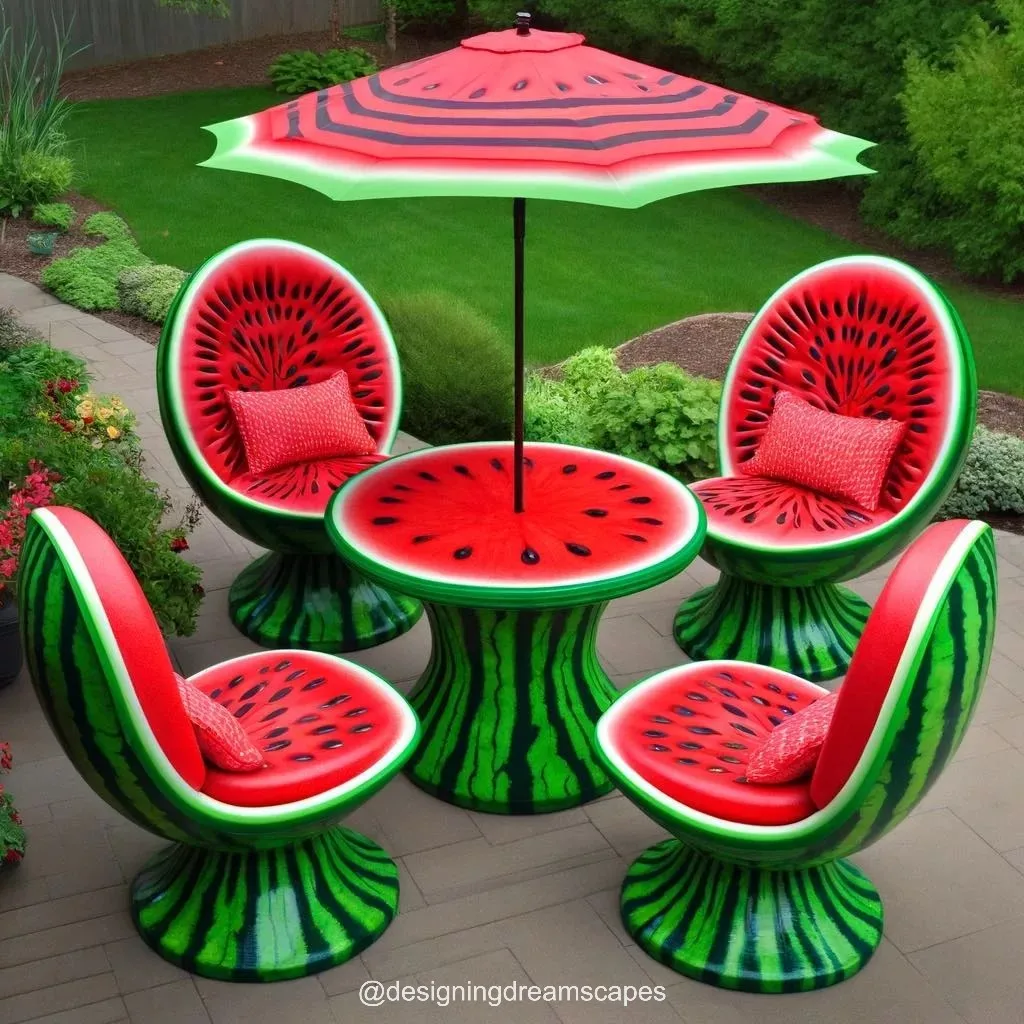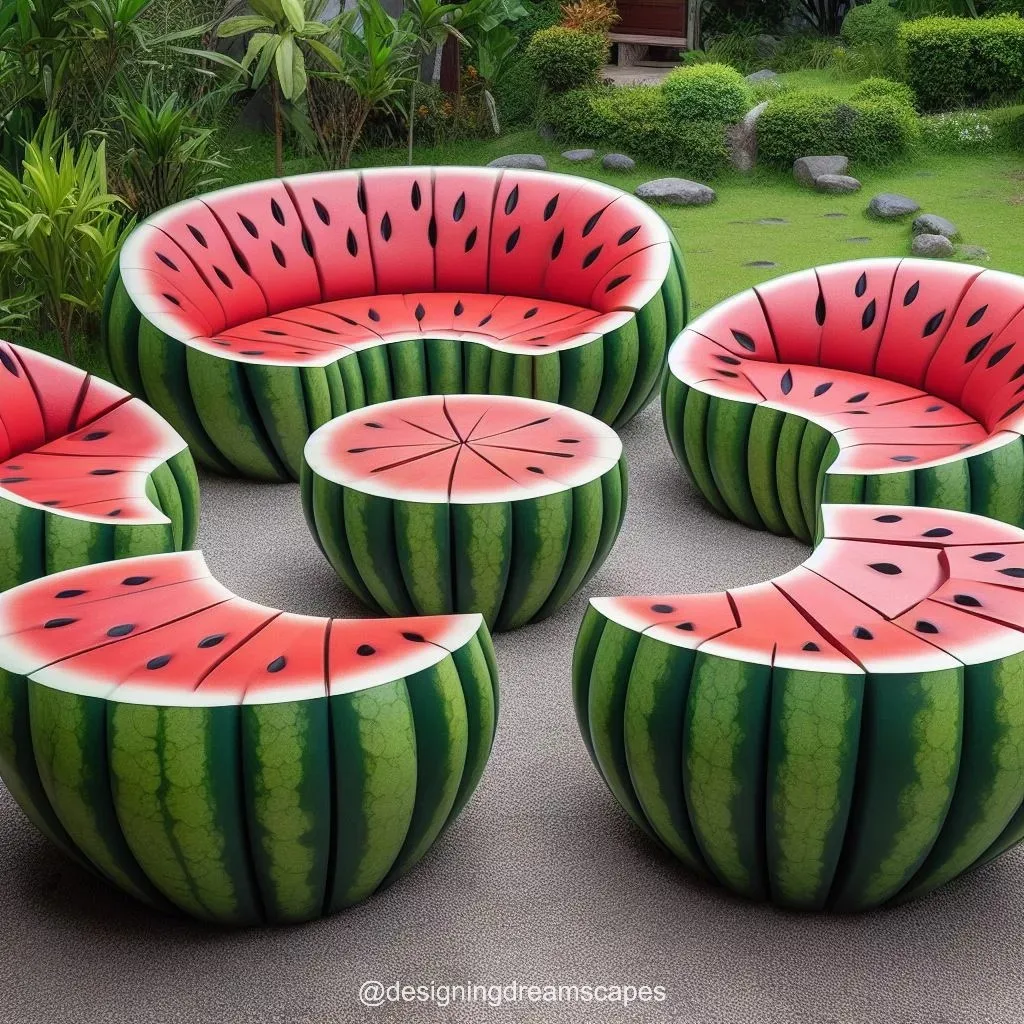Are you tired of your plain, boring patio? Does it lack character and color? Why not turn it into a lush, vibrant fruit oasis that will not only add beauty to your outdoor space but also provide you with fresh fruits right at your doorstep? A fruit patio is not only aesthetically pleasing but also practical and fulfilling. In this blog post, we will guide you through the process of creating your dream fruit patio oasis, step by step.

Contents
1. Choose the Right Location for Your Fruit Patio
The first step in creating your fruit patio is choosing the right location. You want to choose an area that gets plenty of sunlight, as most fruit trees require at least six hours of direct sunlight per day. Observe your patio throughout the day and see which spots get the most sun. Avoid placing your fruit patio near large trees or buildings that may block the sun.
Next, consider the size of your patio and how many fruit trees you want to plant. Make sure there is enough space for each tree to grow and thrive. Keep in mind that some fruit trees can grow quite large and may need to be pruned regularly. It’s also important to consider the type of soil in your chosen location. Most fruit trees prefer well-drained soil with a pH between 6.0-7.0. If your soil is not ideal, you can use raised beds or containers to grow your fruit trees.

Sub Headings:
– Sunlight Requirements
When choosing the location for your fruit patio, it’s essential to consider the amount of sunlight that area receives. As mentioned earlier, most fruit trees need at least six hours of direct sunlight per day. This is because sunlight is crucial for photosynthesis, the process by which plants convert sunlight into energy. Without enough sunlight, your fruit trees may not produce adequate fruits, and their growth may be stunted.
– Space Considerations
Space is another crucial factor to consider when choosing the location for your fruit patio. You want to make sure there is enough room for each tree to grow and thrive. Fruit trees can vary in size, so it’s important to research and understand the expected size of each tree you plan on planting. Keep in mind that some fruit trees may also have spreading root systems, so make sure to leave enough space between trees and structures to avoid any potential damage.
– Soil Quality
The type and quality of soil in your chosen location can greatly affect the health and growth of your fruit trees. Most fruit trees prefer well-drained soil with a neutral pH. If your soil is not ideal, you can improve it by adding organic matter such as compost or manure. You can also create raised beds or use containers filled with good quality potting mix to create an ideal growing environment for your fruit trees.

2. Choose Your Fruit Trees
Once you have chosen the perfect location for your fruit patio, it’s time to select the fruit trees you want to plant. This step requires some research as you need to consider factors such as climate, pollination requirements, and tree size.
First, consider your climate. Some fruit trees thrive in certain climates and may not do well in others. Make sure to choose fruit trees that are suitable for your specific climate to ensure their survival and productivity.
Next, determine the pollination requirements of your chosen fruit trees. Some fruit trees are self-pollinating, while others require cross-pollination from another tree of the same species. If you choose fruit trees that require cross-pollination, make sure to plant them in close proximity to each other.
Lastly, consider the size of your chosen fruit trees. As mentioned earlier, some fruit trees can grow quite large, while others stay relatively small. If you have limited space, it’s best to choose dwarf varieties of fruit trees that will not take up too much room.

Sub Headings:
– Climate Considerations
Different fruits thrive in different climates, so it’s important to research and choose fruit trees that are suitable for your specific climate. For example, citrus trees do well in warm, tropical climates, while apple trees prefer cooler climates. If you’re unsure about the climate in your area, consult with a local greenhouse or garden center for expert advice.
– Pollination Requirements
Some fruit trees, such as apple, pear, and cherry, require cross-pollination from another tree of the same species. This is because they have male and female flowers on separate trees, and pollination must occur for fruit production. If you only have space for one tree, make sure to choose self-pollinating varieties such as figs, peaches, and apricots.
– Tree Size
The size of your chosen fruit trees is also an essential factor to consider. Some fruit trees can reach heights of 20-30 feet, while others stay relatively small, around 6-8 feet. If you have limited space, consider choosing dwarf or semi-dwarf varieties that will not take up too much room. However, keep in mind that these smaller trees may produce less fruit than their larger counterparts.

3. Plan Your Patio Layout
Now that you have chosen your fruit trees, it’s time to plan the layout of your fruit patio. This step requires careful consideration to ensure your trees have enough space to grow and flourish.
First, decide where you want to place each tree, keeping in mind the space requirements we mentioned earlier. Next, consider the aesthetics of your patio. You may want to create a symmetrical layout or a more natural, random arrangement. Whichever layout you choose, make sure to leave enough room for pathways so you can easily access and care for your trees.
Sub Headings:
– Tree Placement
When planning the layout of your fruit patio, keep in mind the size of each tree and its growth habits. For example, large trees such as mango or avocado should be placed towards the back of the patio, while smaller trees like citrus or figs can be placed towards the front. You may also want to consider placing taller trees in the middle with shorter trees surrounding them.

– Aesthetics
Your fruit patio is not only functional but also adds to the beauty of your outdoor space. Consider the overall look and feel you want to achieve. You may want a more structured, symmetrical layout, or a more natural, random arrangement. Whichever you choose, make sure it complements your outdoor space and adds to its charm.
– Pathways
It’s important to have pathways around your fruit patio so you can easily access and care for your trees. Whether you use pavers, gravel, or mulch, make sure to leave enough room for walking and working around your trees. You may also want to consider adding seating areas or a small table for a perfect spot to relax and enjoy your fruit oasis.
4. Prepare the Ground and Plant Your Fruit Trees
Now that you have planned your patio layout, it’s time to start preparing the ground for planting. Start by removing any existing grass or debris from the area. Next, loosen the soil and dig a hole that is at least twice the width and depth of the root ball of your tree.
Before planting, make sure to inspect the roots of your tree and remove any damaged or broken ones. Place the tree in the hole, making sure the top of the root ball is level with the ground. Fill the hole with soil, gently packing it down to eliminate any air pockets. Water thoroughly and add a layer of mulch around the base of the tree to retain moisture.

Sub Headings:
– Soil Preparation
Preparing the ground for planting is crucial to ensure the health and growth of your fruit trees. Start by removing any existing grass or debris from the area and loosening the soil. If your soil is not ideal, add organic matter such as compost or manure to improve its quality. You can also create raised beds or use containers filled with good quality potting mix to provide an ideal growing environment for your trees.
– Tree Inspection
Before planting your fruit tree, it’s essential to inspect the roots and remove any damaged or broken ones. This will help promote healthy growth and prevent any potential diseases or pests from affecting your tree. If you notice any root girdling, where the roots are growing in circles instead of spreading out, make sure to loosen them before planting to encourage proper growth.
– Mulching
Mulching around the base of your fruit tree has many benefits. It helps retain moisture in the soil, suppresses weed growth, and adds nutrients to the soil as it breaks down. Make sure to leave a small gap between the mulch and the trunk of the tree to prevent any potential rotting. You can use various materials for mulching, such as wood chips, straw, or shredded leaves.

5. Provide Adequate Care for Your Fruit Patio
Congratulations, you have now successfully created your dream fruit patio oasis! However, your work doesn’t stop there. To ensure the health and productivity of your fruit trees, they will need proper care and maintenance.
First, make sure to water your trees regularly, especially during hot and dry weather. Most fruit trees need at least one inch of water per week, either from rainfall or irrigation. You may also want to add a layer of organic mulch around your trees to help retain moisture and suppress weed growth.
Next, fertilize your trees once or twice a year with a well-balanced fertilizer. You can also add compost or other organic materials to the soil to provide essential nutrients for your trees.
Lastly, make sure to prune your fruit trees regularly to promote a strong structure and remove any dead, diseased, or crossing branches. Pruning also helps improve air circulation and sunlight penetration, which is crucial for healthy tree growth.

Sub Headings:
– Watering
Water is essential for the health and growth of your fruit trees. Make sure to water your trees regularly, especially during hot and dry weather. Most fruit trees need at least one inch of water per week, either from rainfall or irrigation. Avoid overwatering as it can lead to root rot and other diseases.
– Fertilizing
Fertilizing your fruit trees is important to ensure they have adequate nutrients for growth and fruit production. It’s best to use a well-balanced fertilizer, either organic or synthetic, once or twice a year. You can also add compost or other organic materials to the soil to provide essential nutrients for your trees.
– Pruning
Regular pruning is crucial for the health and structure of your fruit trees. It helps remove dead, diseased, or crossing branches and promotes new growth. Pruning also improves air circulation and sunlight penetration, which is essential for healthy tree growth. Make sure to research and understand the proper pruning techniques for each type of fruit tree you have planted.
6. Enjoy Your Fresh Fruit Patio Oasis
Now that you have followed all the steps and provided proper care and maintenance for your fruit patio, it’s time to sit back, relax, and enjoy the fruits of your labor. Literally! There’s nothing more satisfying than picking fresh, ripe fruit right from your own patio. Not only will your fruit patio add beauty and color to your outdoor space, but it will also provide you with delicious and nutritious fruits throughout the year.
Creating your dream fruit patio oasis may require some work and patience, but the rewards are worth it. So why wait? Get started today and turn your plain, boring patio into a vibrant and fruitful oasis that you can enjoy for years to come.
Conclusion
In conclusion, a fruit patio is an excellent addition to any outdoor space. It not only adds beauty and color but also provides you with fresh and delicious fruits right at your doorstep. By following the steps we have outlined in this blog post, you can easily create your dream fruit patio oasis today.
Remember to choose the right location for your fruit patio, select the appropriate fruit trees, plan your layout carefully, prepare the ground and plant your trees, and provide adequate care and maintenance for healthy and productive trees. With some patience and dedication, you can enjoy your very own fresh and vibrant fruit patio oasis in no time.









